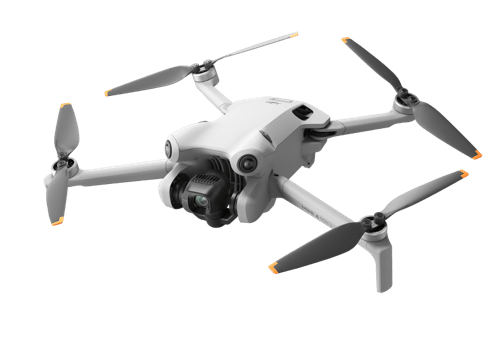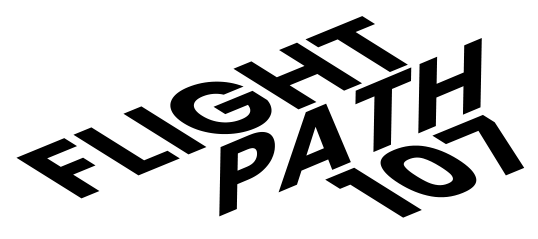The 4 Forces of Flight
The four forces of flight—lift, thrust, drag, and weight—work together to control an aircraft’s movement and stability in the air.
Lift
Lift is what your small UA’s wings or rotors create as air flows over them. Lift pushes against the UA’s weight as it ascends, letting you take off, stay level, and do all those awesome maneuvers.
Weight
Weight is how gravity pulls down on the UA. It’s the force that needs to be countered by lift so your aircraft can stay up level and balanced.
Thrust
Thrust is the push from your UA’s motors or engines that make the UA go forward. It helps you overcome drag and manage your speed, and steer where you want to go.
Drag
Drag is the air pushing back against your UA’s motion. It counters thrust, affecting how fast and efficiently you can fly by creating resistance you need to overcome.
This drag is more noticeable at lower speeds or when climbing steeply, as the wings work harder.
It’s important to know that the more you speed up, induced drag eventually decreases because the UA’s aerodynamic design allows it to fly more efficiently.
Lift
Lift is what your small UA’s wings or rotors create as air flows over them. Lift pushes against the UA’s weight as it ascends, letting you take off, stay level, and do all those awesome maneuvers.
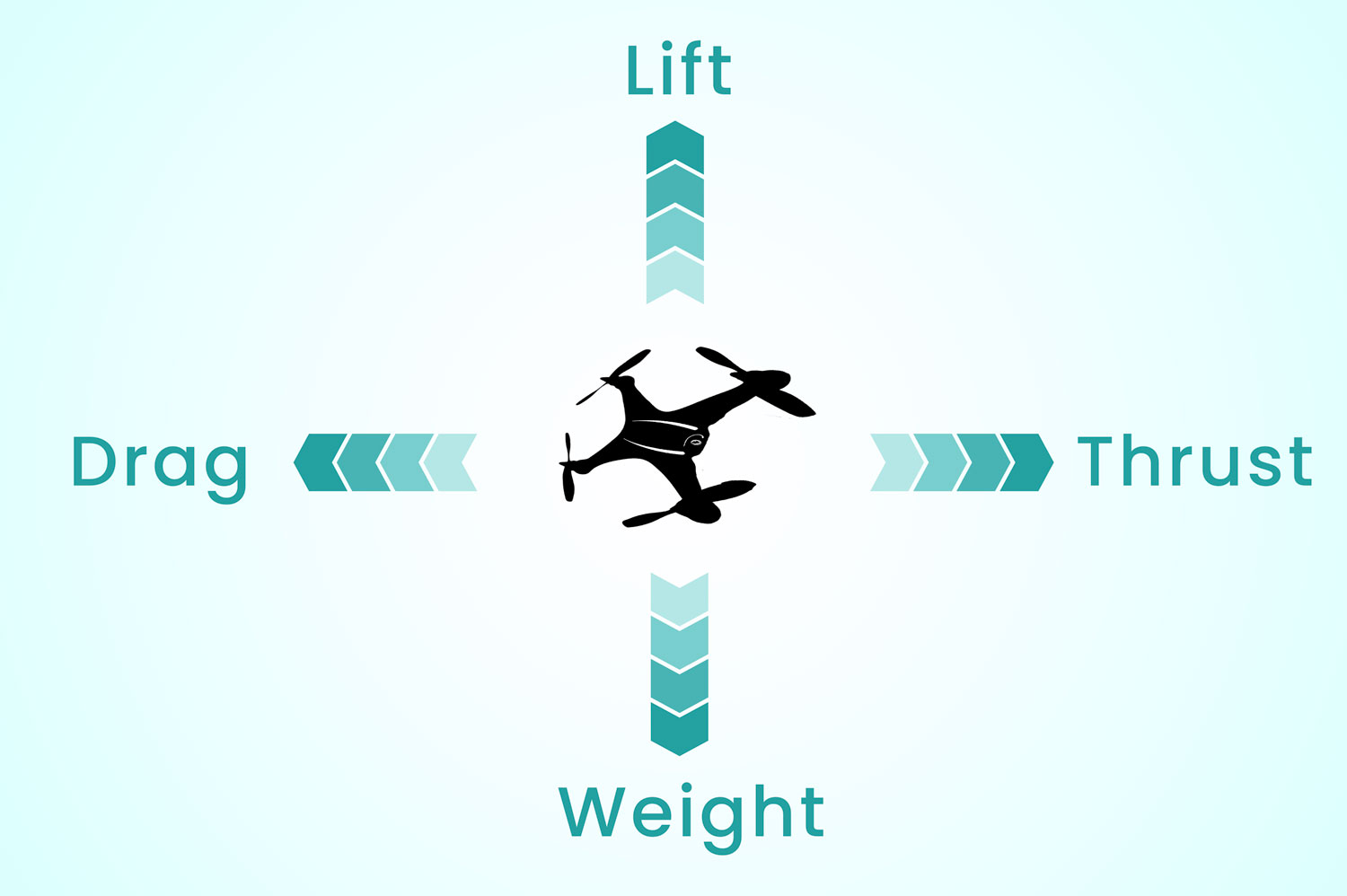
3 Scenarios
How the 4 Forces of Flight Impact One Another
1. Achieving Steady Flight: The Balance of Lift and Weight
When an sUAS is in a steady-state climb, the force of lift equals the force of weight. This balance is also essential for level flight.
In simple terms, for your sUAS to fly straight and steady, the lift pushing upwards must be equal to the weight pulling it down. When these 2 forces are balanced, the drone maintains a consistent altitude, whether climbing steadily or flying level.
Scenario:
Imagine you’re piloting your drone to capture a stunning overhead shot of a sprawling cityscape. To get that perfect, steady view, you need the drone to fly steady and level.
Your drone has an automatic mechanism that maintains lift to match its weight when you want it to hover. This means you don’t have to constantly adjust the controls to keep it steady. As long as lift and weight are in perfect balance, your drone stays at a consistent altitude, whether you’re climbing steadily or flying flat.
2. The Impact of Drag on Steep Climbing
Steep climbs increase drag, making it harder for your drone to ascend efficiently and smoothly. At steep angles, your drone’s wings have to work overtime.
Scenario:
Imagine you’re out in the rainforest, capturing ecological shots with your UA. Everything is going smoothly until you try to make a steep climb above a tree canopy, and suddenly, your drone starts to struggle. Why is this happening?
The main culprit here is drag. At steep angles, your drone’s wings have to work overtime, pushing against the extra air resistance (that’s drag). This drag makes it harder for your drone to ascend efficiently. Plus, don’t forget about gravity’s pull (weight) adding to the challenge.
To avoid this, keep an eye on your angles and climb gradually to keep your flight smooth.
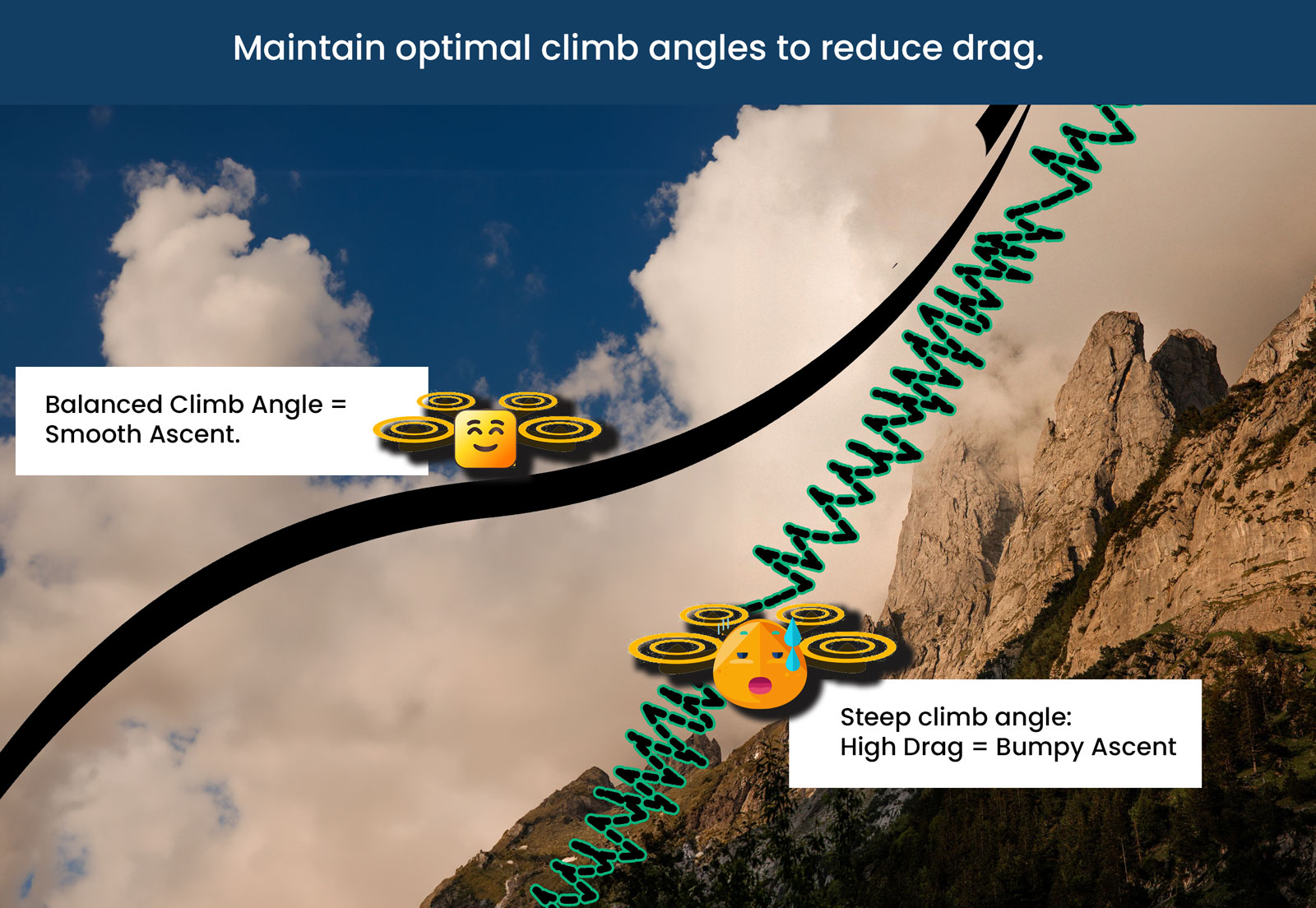
3. Balancing Thrust and Angle for a Smooth Ascent
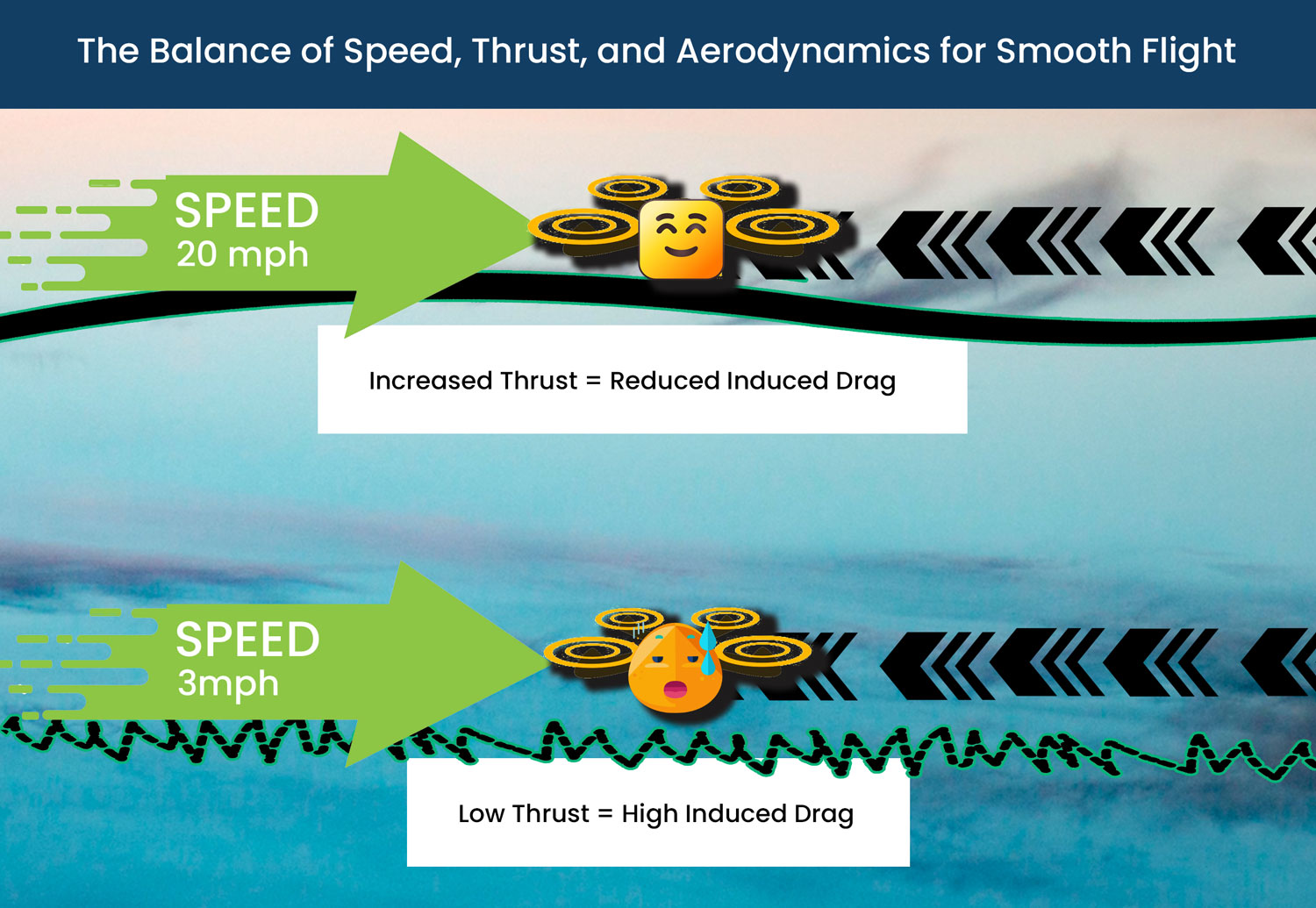
To achieve a smooth ascent, increasing thrust helps counteract induced drag, enhancing aerodynamic efficiency as speed increases. However, it’s important to avoid a steep climb angle, as excessive drag can still disrupt the flight.
Scenario:
You’re on a mission to document a breathtaking mountain range and capture high-resolution aerial footage of the rugged terrain. As you begin your ascent, everything is smooth when the drone is flying at a steady 20 mph, cutting through the air with ease. The thrust is sufficient to counteract drag, allowing for a steady climb and efficient flight.
However, when you slow down to 3 mph, the situation changes. The drone begins to struggle due to increased induced drag at the lower speed, causing the climb to feel bumpy and inefficient.
The slower speed reduces the drone’s ability to generate lift effectively, making it harder to overcome the drag.
To smooth out the climb, you increase the thrust by speeding up the drone again. As the speed increases, the aerodynamic efficiency improves, reducing the induced drag and allowing for a smoother ascent.
By maintaining a higher speed and balancing thrust with the right climb angle, you can bet on a stable and efficient ascent. Now you can definitely capture those stunning mountain views with precision and confidence.

